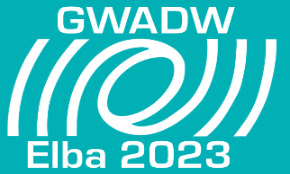Speaker
Description
During the scientific run O4, gravitational-wave detectors will attain broadband Quantum Noise reduction through Frequency-Dependent Squeezing (FDS), by coupling a 300m-long Filter Cavity (FC) to the main interferometer. This required additional infrastructure work and maintenance, and will inevitably add optical losses (~1 ppm/m).
In 3rd generation detectors, km-long FCs will be needed, due to the increased arm length.
We are currently working at the European Gravitational Observatory (EGO) on a table-top optical prototype with the aim to implement an alternative proposal to achieve FDS, without employing a FC. The core working principle of the scheme is based upon the generation of two-mode squeezing. The two beams will be EPR-entangled, and this transfers the rotation of the squeezing ellipse from a detuned idler beam to the signal beam, resonating in a small-scale interferometer. This foresees a future implementation in km-scale real detectors.
An EPR squeezer would constitute a cheaper and more compact setup, and it would allow for more flexibility than the currently used FC scheme.
This talk will illustrate the basics of EPR conditional squeezing, and then the current status of the EPR R&D experiment at EGO will be presented.

